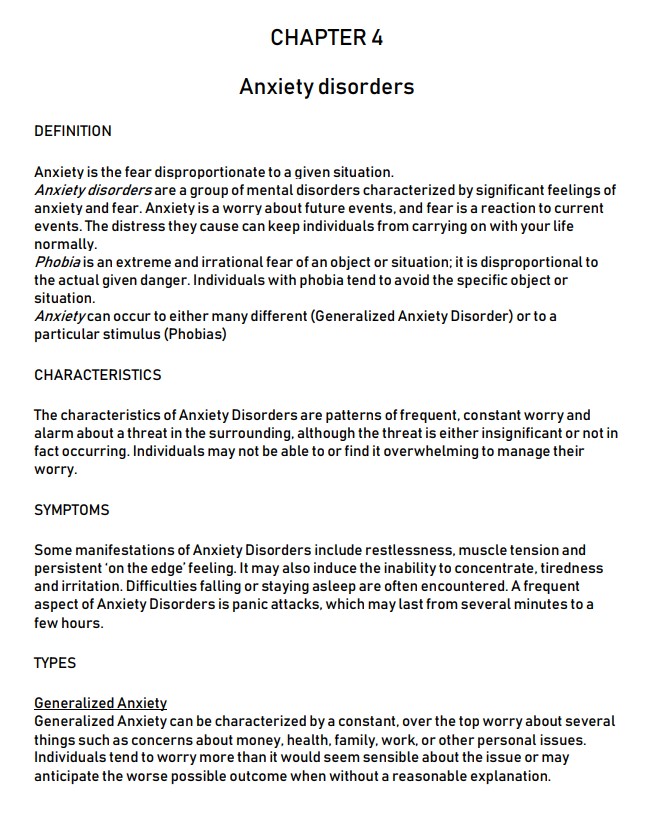Anxiety Disorders
Summary:
Anxiety disorders are characterized by excessive and disproportionate feelings of anxiety and fear, with phobias being extreme and irrational fears that can lead to avoidance behaviors. Various measures are used to assess anxiety and phobias, but they may be influenced by patient response and cultural bias. Phobias can be explained through behavioral, psychodynamic, biomedical/genetic, and cognitive approaches. Three effective treatments for phobias are systematic desensitization, applied tension, and cognitive-behavioral therapy. Studies have shown that these treatments are effective in reducing phobic behaviors and tendencies, with applied tension showing results not worse than other techniques in less time. Additionally, a study comparing CBT and applied relaxation for a panic disorder found no significant difference between the two treatments, and none of the participants had relapsed after one year.
Excerpt:
ANXIETY DISORDERS
DEFINITION
Anxiety is the fear disproportionate to a given situation. Anxiety disorders are a group of mental disorders characterized by significant feelings of anxiety and fear. Anxiety is a worry about future events, and fear is a reaction to current events. The distress they cause can keep individuals from carrying on with your life
normally.
A phobia is an extreme and irrational fear of an object or situation; it is disproportional to the actually given danger. Individuals with phobias tend to avoid specific objects or situations.
Anxiety can occur to either many different (Generalized Anxiety Disorder) or to a particular stimulus (Phobias)
CHARACTERISTICS
The characteristics of Anxiety Disorders are patterns of frequent, constant worry and alarm about a threat in the surrounding, although the threat is either insignificant or not in fact occurring. Individuals may not be able to or find it overwhelming to manage their worries.
SYMPTOMS
Some manifestations of Anxiety Disorders include restlessness, muscle tension, and persistent ‘on the edge’ feelings. It may also induce the inability to concentrate, tiredness, and irritation. Difficulties falling or staying asleep are often encountered. A frequent aspect of Anxiety Disorders is panic attacks, which may last from several minutes to a few hours.


Reviews